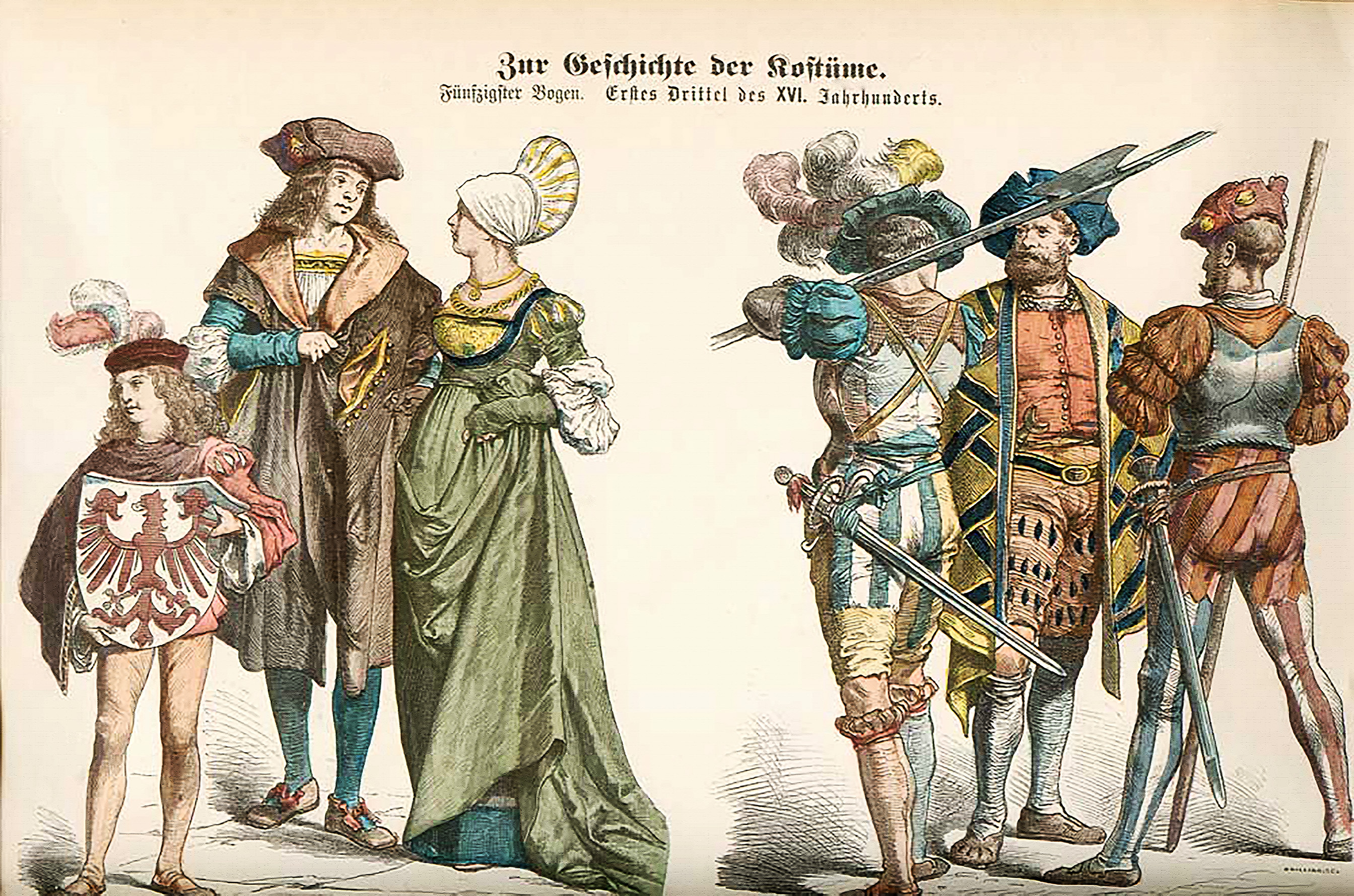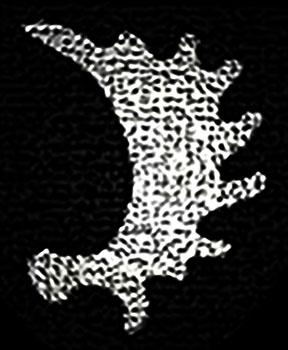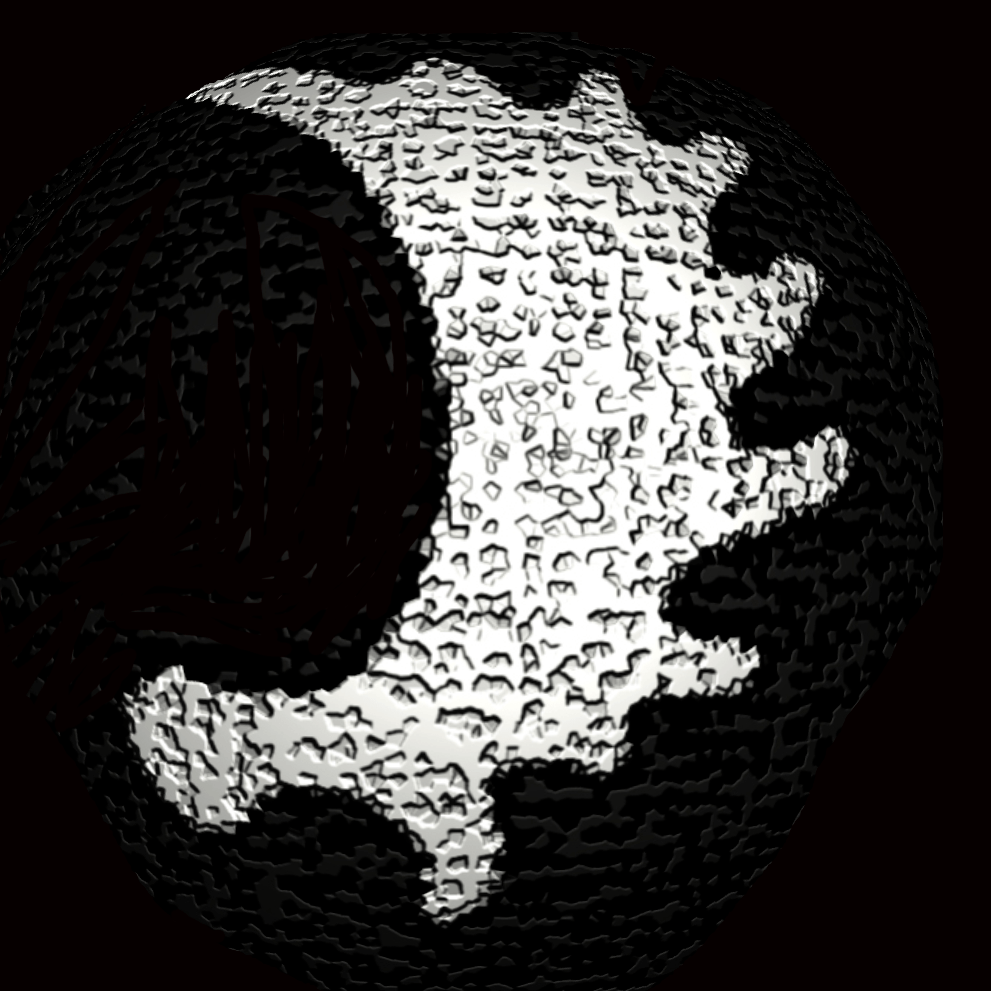
The Image above is from a book, History of Clothing, from a page showing outfits from the first third of the 16th century. The three men at the right are Landsknechte, or servants of the land, demonstrating the very colorful and unique clothing that was worn by these mercenary soldiers.
Maximillian I… who reigned the Holy Roman Empire jointly with his father Kaiser Friedrich III for the last 10 years of his father’s life… formed the first Landsknechte company in 1487. He allowed them to wear distinctively outlandish garb in order to be his easily recognized fighting force. He also exempted them from many of the harsh laws of the time due to their short life expectancy. Although formidable soldiers, they gained a mixed reputation. One writer in 1516 remarked that the handiwork and greatest amusement of Landsknechte was blaspheming, whoring, gambling, murdering, burning and widow making.


However, there is no dispute that Landsknechte were an important military force until the mid 16th-century. At the height of their success, the Landsknechte ranked among the most-effective foot soldiers in the world. Consisting predominantly of German mercenary pikemen and supporting foot soldiers, they fought in phalanxes, integrating mobility with shock, their squares of hundreds of pikemen and halberdiers could rebuff heavy cavalry charges, allowing the artisans and peasants who made up the squares to take down knights. The weight of those tight disciplined formations pressed down on opponents, transforming the pike square into a weapon in its own right.

Pictured below are five “double-paid soldiers”… each holding a two-hand sword. The image demonstrates the vivid colors that were an integral part of the Landsknecht “look”, as documented in 1501 by Hans Burckmaier in this excerpt from the horizontal scrollwork ‘Triumph of Emperor Maximilian”.

Landsknechte schooled in the use of the Zweihänder, a two-handed sword, were entitled to double pay and thus qualified as Doppelsöldner. The Zweihänder was used by the Doppelsöldner to break through formations of pikemen, especially Swiss pikemen, by either being swung to break the ends of the pikes themselves or to knock them aside and attack the pikemen directly.



Explore images on brand new products at my stores


